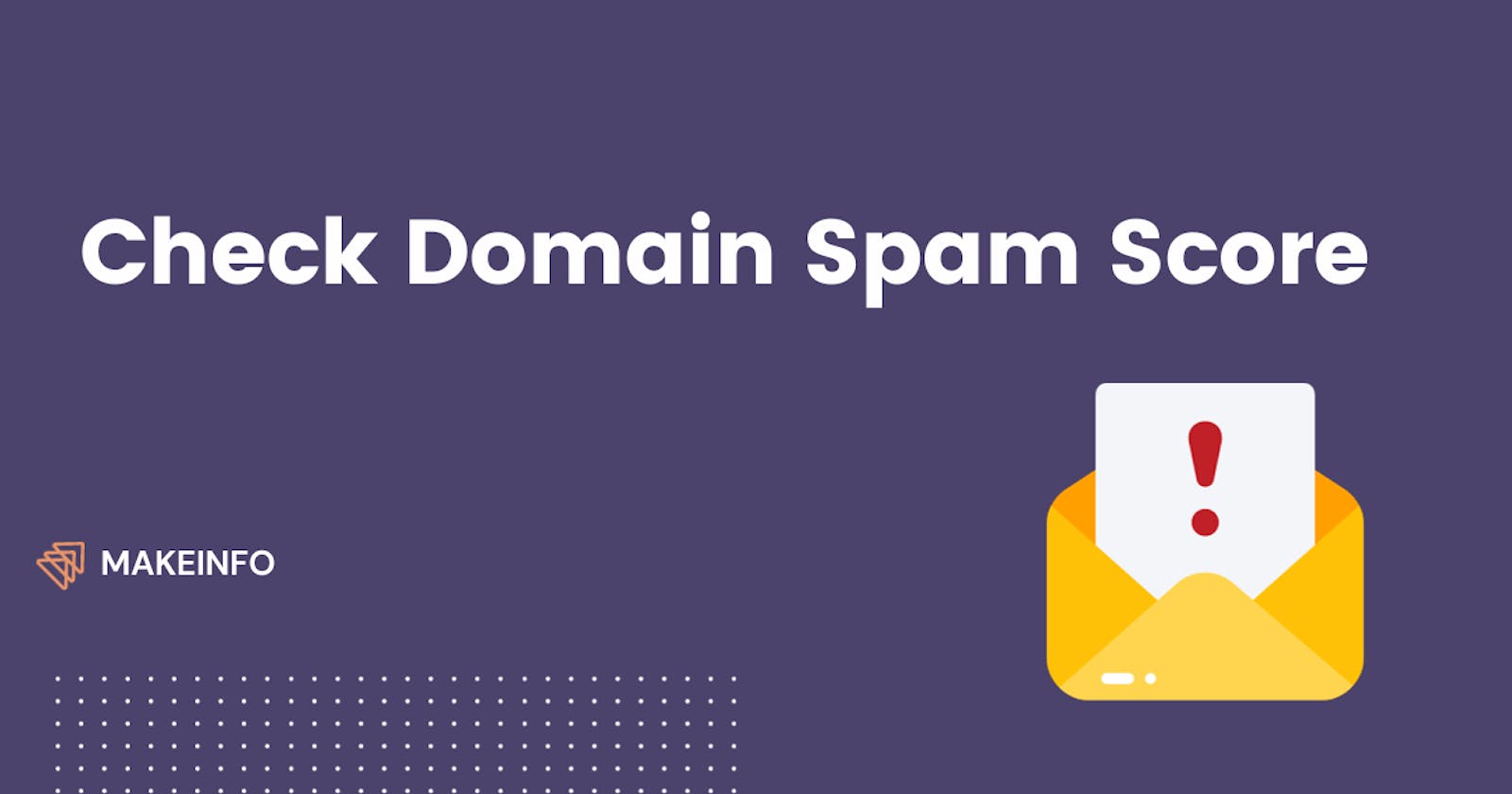Spam emails not only clutter our inboxes but can also pose significant security risks.
In this guide, we will delve into the intricacies of email domain spam scores, exploring what they are, why they matter, and most importantly, how you can check and improve your domain's spam score.
Why does Email domain spam score matter?
Here are several reasons why this metric holds significant importance:
Delivery Success:
- A favorable email domain spam score increases the likelihood that your emails will reach the intended recipients' inboxes rather than being relegated to the dreaded spam folder.
Reputation Management
- Email domain spam scores are intricately tied to your sender's reputation
Marketing Effectiveness:
For businesses and marketers, a high email domain spam score is crucial for the success of email marketing campaigns.
Messages that are marked as spam are less likely to be opened and can negatively impact the effectiveness of your promotional efforts.
How to check your domain spam score using Moz?
Visit https://moz.com/domain-analysis to check the spam score.
Here are some effective ways to improve and maintain a healthy email domain spam score:
Use Opt-In Subscriptions:
Build your email list organically by ensuring that subscribers have willingly opted in to receive emails from you.
Avoid purchasing email lists, as they often contain unengaged or uninterested recipients, which can lead to spam complaints.
Provide Clear and Relevant Content:
- Craft engaging and relevant email content that aligns with the expectations of your subscribers.
Authenticate Your Emails:
- Implement email authentication protocols such as SPF (Sender Policy Framework), DKIM (DomainKeys Identified Mail), and DMARC (Domain-based Message Authentication, Reporting, and Conformance) to verify that your emails are legitimately sent from your domain.
Monitor and Respond to Spam Complaints:
- Actively monitor feedback loops and spam complaint reports provided by email service providers. A high volume of complaints can significantly harm your sender's reputation.
Manage Bounces:
- Regularly clean your email list to remove invalid or non-existent email addresses. High bounce rates can negatively impact your sender's reputation.
Avoid Spam Trigger Words and Phrases:
Refrain from using words and phrases commonly associated with spam in your email content. Spam filters are designed to detect and filter out emails that exhibit spam-like characteristics.
Personalize Your Emails:
- Personalize your email messages to make them more engaging for your subscribers. Generic or mass-produced emails are more likely to be marked as spam.
Segment Your Email List:
- Segment your email list based on user preferences, behaviors, or demographics. Targeted and relevant emails are less likely to be marked as spam.
Provide Clear Unsubscribe Options:
- Include a visible and easily accessible unsubscribe link in your emails. Making it easy for recipients to opt-out can reduce the likelihood of spam complaints.
Regularly Review and Update Your Email Lists:
- Keep your email lists up to date by removing inactive or unengaged subscribers. This helps improve your overall email deliverability.
Use a Reputable Email Service Provider (ESP):
- Choose a reliable ESP that has a good reputation and provides tools and features to help you manage and monitor your email deliverability.
Test Before Sending:
- Before sending out a large email campaign, conduct tests to check for potential spam issues. Many ESPs offer tools to preview how your emails will appear in different email clients and spam filters.
By consistently implementing these best practices, you can enhance your chances of maintaining a positive email domain spam score and ensuring that your messages reach your intended audience without being filtered into spam folders.
Regular monitoring and adjustments based on feedback and analytics are crucial for long-term success in email deliverability.

